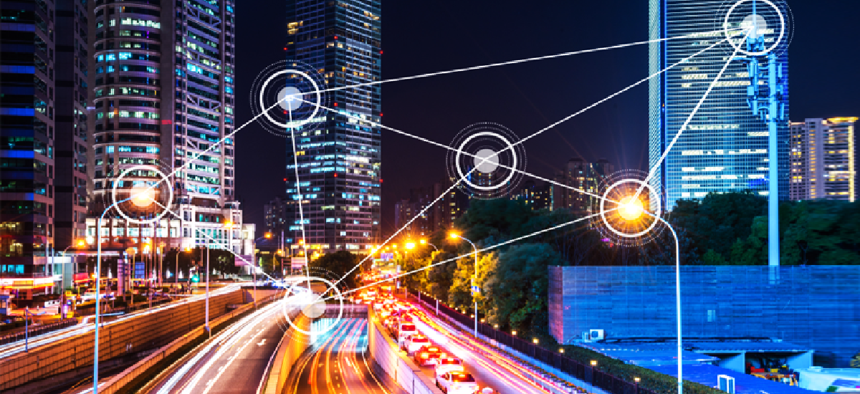The importance of hardware in kicking off a smart city program


Connecting state and local government leaders
The right hardware not only impacts an internet-of-things application’s cost, capabilities and user experience -- it also requires a different skillset to manage.
Many industries are adopting internet-of-things technology to improve their existing infrastructure, and cities are no different. According to McKinsey, cities that use digital solutions could improve some quality-of-life indicators by 10% to 30%. That advantage can help cities compete for businesses, residents, tourists, and even funding from the federal government. To remain relevant, they must take advantage of evolving IoT technology to become flexible, smarter and more strategic.
Rapid urbanization is driving the rise of smarter cities and a more efficient, sustainable infrastructure. By 2030, it’s predicted that two-thirds of the world will live in urban communities. This growth has increased the need for more advanced solutions -- automation, energy-saving lighting and more efficient transportation options -- to provide a sustainable lifestyle. With today’s cities consuming 78% of the world’s energy, city governments' data-driven environments, connected devices like parking meters, kiosks, energy-saving street light sensors and traffic signals can increase efficiencies and deliver serious cost savings.
Many municipalities have already invested in smart city technology, while others are investigating smarter solutions, pushing the expected global market for smart cities to expand 18.9% from 2019 to 2025.
Changing how cities run with hardware
With much of the conversation about smart city IoT focusing on analysis, application and security of data, the gathering of the data seems to be an afterthought. The hardware that makes up the IoT can be just as complex as the data itself, challenging many municipalities. That’s why good decisions about what hardware to use and how to deploy IoT devices are the foundation of a sound digital strategy.
Deciding on the right hardware not only impacts the IoT product’s cost, application capabilities and user experience, but it also requires a different skillset to manage. Cities must make sure they’re asking the right questions to get the right type of product. For example, fully understanding what types of tasks the device will be expected to perform will help determine not only the best hardware to use, but the number of sensors, the amount of processing power and the size constraints. Additionally, if the data that is being pulled sensitive and requires higher security, then the IoT devices may need to be hardwired as opposed to wirelessly connected. A hardware specialist is imperative in helping with these decisions.
Cities may think implementing IoT applications is cost prohibitive. The reality, however, is that there are affordable IoT hardware options on the market, but the research needs to be done upfront. Cities that move forward with large deployments without forethought on evolution and expansion may require costly hardware replacements when they need to change a function. Before rolling out an IoT application, cities should first adopt a small-scale "test and learn" approach so the deployment and effectiveness of the program can be measured before adopting it on a broader scale.
Remember the edge
In an IoT platform, connected hardware devices are sharing data constantly. With edge computing – where analysis takes place on the devices at the network edge and the most relevant information is sent directly to city managers for efficient decision making. -- cities can quickly glean the information they need to address specific needs. The transportation industry, for example, takes advantage of edge computing. The many devices inside busses and trains process large amounts of data tracking the location or the vehicles and the health of the vehicle’s machinery. The analysis and decision-making are performed locally on these devices, and the insights are sent directly to the municipality.
By moving some or all the processing functions closer to the end user or data collection point and taking advantage of cloud edge computing, cities can mitigate the effects of latency in applications covering widely distributed sites. Data at the edge can be sorted and filtered for anomalies and changes, with only the data decision makers need being reported.
Innovative technologies are just beginning to reveal what is possible in smart cities. IoT has the potential to make cities more functional and manageable, as long as steps are taken in the beginning of the process to ensure that the proper hardware is chosen to compliment the larger program.




